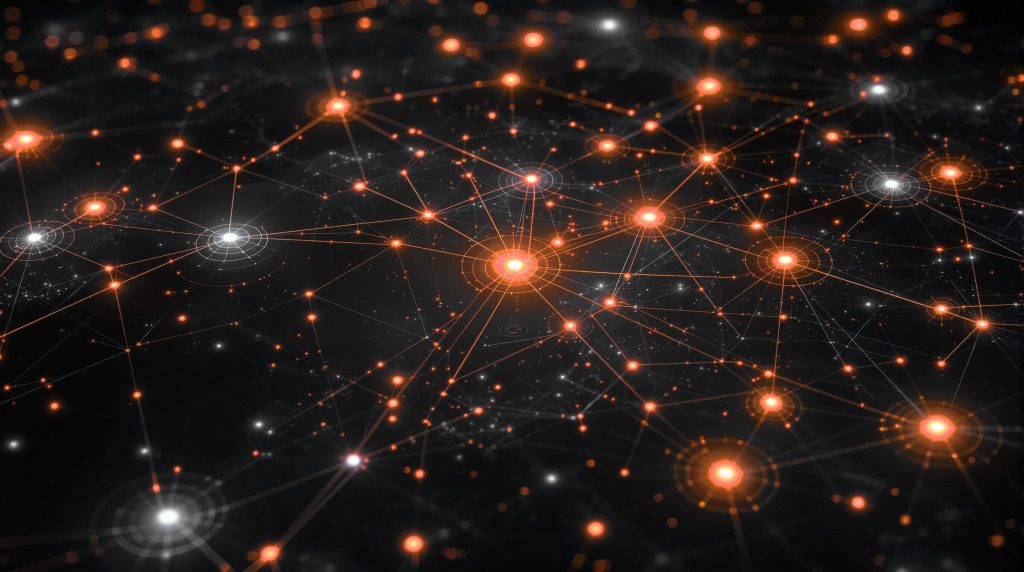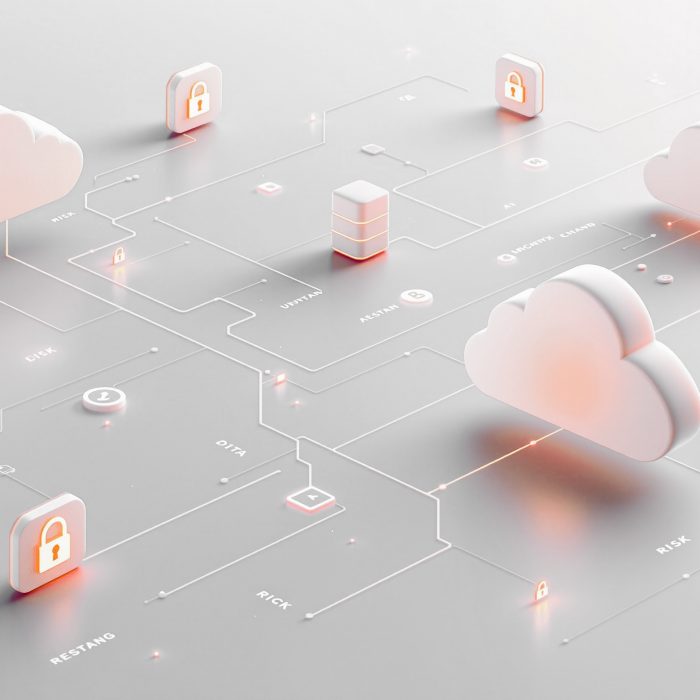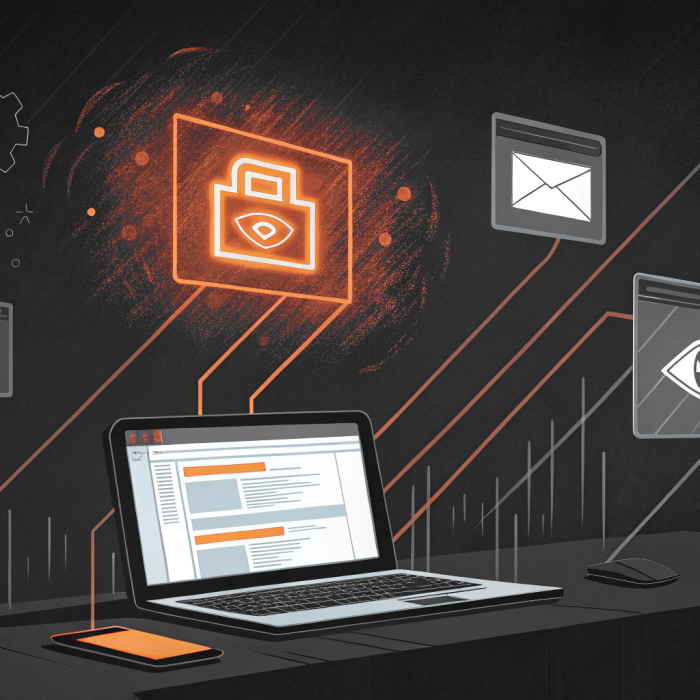Artificial intelligence is changing cybersecurity in ways we couldn’t have imagined a few years ago. Sure, tech has always moved fast, but what makes this shift unique is that the same technology strengthens both attackers and defenders.
The AI that protects your network today might be studying your defenses tomorrow. And the tools built to find vulnerabilities can just as easily be turned against your systems as used to protect them.
This isn’t just about faster computers or better algorithms. AI brings something fundamentally different to security: systems that learn independently and improve without human intervention.
Let’s explore what this means for your organization.
The AI Threat Scene: What’s Actually Happening
The conversations around AI security threats often bounce between fear-mongering and dismissive skepticism. Neither position is particularly helpful. Instead, let’s examine what’s actually happening in the wild.
Automated Reconnaissance and Attack Surface Mapping
Traditional network scanning was time-consuming and often noisy enough to trigger alerts. Today’s AI-powered reconnaissance tools operate with more subtlety, adapting their behavior based on network responses and mimicking legitimate traffic patterns.
These systems can map attack surfaces over extended periods, identifying potential entry points while staying below detection thresholds. They don’t just scan for open ports; they build comprehensive models of organizational infrastructure, noting patterns, schedules, and relationships between systems.
IBM demonstrated this concept with their DeepLocker proof of concept, which used AI to hide malicious payloads in benign applications that would only activate when specific target conditions were met. While DeepLocker was created for research purposes, it illustrates how AI can enable stealthy, persistent reconnaissance that traditional security tools struggle to detect.

Evolving Phishing and Social Engineering
The quality of AI-generated phishing attempts has improved dramatically. We’re no longer talking about those old typo-riddled emails promising you an inheritance from your long-lost granduncle. Today’s AI can:
- Analyze writing styles from email archives or social media posts
- Craft messages that convincingly mimic colleagues, partners, or executives
- Time delivery based on work patterns
- Generate contextually relevant content that references ongoing projects
- Create fake voice or video content for more sophisticated attacks
These attacks work because they exploit human trust, and they’re getting better at it. A 2023 study by SoSafe showed that AI-written phishing emails were opened by 78% of people, with 21% clicking on malicious content within them.
More recently, research published in February 2025 found that AI-generated phishing emails performed on par with those created by human experts, achieving a 54% success rate in eliciting clicks on embedded links.
Vulnerability Discovery and Exploitation
Perhaps most concerning is AI’s growing ability to discover and exploit vulnerabilities. While we’re not yet seeing widespread autonomous exploitation in the wild, research systems have shown they can:
- Analyze code to find zero-day vulnerabilities
- Develop novel exploit techniques
- Test and refine attacks against defensive systems
- Generalize attack patterns across similar applications
The transition from research to actual attacks is occurring faster than many predicted. In November 2024, Google announced that their AI tool called Big Sleep had discovered a critical zero-day vulnerability in the SQLite database engine, demonstrating how AI can be used to find previously unknown security flaws.
Polymorphic Malware and Attack Customization
Malware traditionally followed relatively predictable patterns, allowing security tools to identify cyber threats by their signatures or behaviors. AI-driven malware changes that equation by:
- Continually modifying its code while maintaining functionality
- Customizing attack methods based on the environment it discovers
- Adapting its behavior to evade specific security measures
- Learning from failed attempts
This adaptive approach makes traditional signature-based threat detection nearly useless, forcing security teams to rely more heavily on behavior analysis and anomaly detection.
The Defender’s Toolkit: AI’s Role in Modern Security
While the threat landscape looks increasingly challenging, security teams aren’t defenseless. The same core technologies powering attacks also create new defensive capabilities.
Enhanced Threat Detection and Response
AI systems excel at finding patterns in vast amounts of data, making them particularly useful for security monitoring and intrusion detection. Unlike traditional rule-based systems, AI-powered tools can:
- Establish baseline behavior for networks, systems, and users
- Identify subtle anomalies that might indicate compromise
- Correlate events across disparate systems
- Reduce false positives by learning from analyst feedback
With these capabilities, organizations can identify potential security incidents much faster and with greater accuracy than traditional methods.
User and Entity Behavior Analytics (UEBA)
Understanding normal behavior patterns helps identify emerging threats before they materialize. Modern AI-powered UEBA tools monitor activities of both users and systems, developing profiles that represent typical behavior. Deviations from these profiles trigger investigation.
For example, if a system administrator who typically works during business hours suddenly logs in at 11 PM from an unusual location and accesses rarely-touched databases, that pattern would generate an alert, even if each individual action might be technically allowed.
These systems grow more accurate over time as they learn patterns specific to your organization. They’re particularly effective at detecting insider threats and compromised credentials, which traditional perimeter security might miss.
Automated Vulnerability Management
Finding and patching vulnerabilities remains one of the most effective security measures, but the scale of modern IT environments makes comprehensive scanning and prioritization difficult for human teams alone.
AI systems can help by:
- Continuously scanning infrastructure for known vulnerabilities
- Correlating vulnerability information with threat intelligence
- Prioritizing patches based on actual exploitation risk
- Identifying security debt and systemic issues
- Recommending configuration changes to mitigate exposure
These capabilities don’t eliminate the need for human judgment, but they do help security teams focus their efforts where they matter most.
Security Orchestration and Automated Response
The speed of modern attacks often outpaces human response capabilities. AI-powered Security Orchestration, Automation and Response (SOAR) platforms help bridge this gap by:
- Automating routine investigation steps
- Gathering context around alerts
- Triggering predetermined response playbooks
- Learning from past incidents to improve future response
These automated systems can contain threats in seconds rather than minutes or hours, significantly reducing the potential damage from active attacks.
The Human Element: AI as Security Partner
Despite the impressive capabilities of AI security systems, the most effective security programs combine technology with human expertise. This partnership leverages the strengths of both.
AI excels at processing vast amounts of data, detecting patterns, and performing consistent repetitive tasks. Meanwhile, humans provide context, strategic thinking, and ethical judgment. In other words, AI handles volume, people handle nuance.
Security teams that view AI as a partner rather than a replacement typically see the best outcomes. But this partnership requires security professionals to develop new skills. Rather than performing every analysis manually, teams now need to:
- Define appropriate parameters for AI systems
- Interpret AI-generated recommendations in broader context
- Evaluate the quality of AI outputs
- Understand AI limitations and failure modes
Organizations that invest in these skills can expect higher satisfaction with their AI cybersecurity tools and better outcomes overall.
How Admin By Request Uses AI
At Admin By Request, we’ve integrated AI capabilities that solve real security challenges without unnecessary complexity. Here’s how we’re using AI to enhance endpoint security while improving efficiency:
AI-Powered Application Approval
Our Endpoint Privilege Management solution uses AI to help organizations safely manage application elevation requests. The AI engine assigns two percentage scores (0-100%) to applications based on:
- The application’s popularity and prevalence across our user base
- The reputation and recognition of the vendor
These scores help organizations automatically identify trusted applications that can be safely elevated without manual review. Applications with high scores (common applications from reputable vendors) can be automatically approved, while rarer applications from unknown vendors receive lower scores and can be flagged for manual review.
This approach lets organizations set their own risk thresholds while drastically reducing the administrative burden of managing application elevation requests. Instead of manually building and maintaining enormous pre-approved lists, the AI handles the initial risk assessment.
Machine Learning Auto-Approval
Working alongside our AI approval system, our Machine Learning capability learns from administrator decisions to build a customized pre-approved application list over time.
Rather than requiring organizations to compile comprehensive lists ahead of time, the system observes which applications administrators repeatedly approve for elevation. After a configurable number of approvals, the system can automatically add these applications to the pre-approved list.
This “learn as you go” approach combines human judgment with machine efficiency, creating a system that continuously improves while respecting organizational policies and risk tolerance.
ChatGPT Integration for Request Assessment
We’ve also integrated ChatGPT to provide administrators with additional context when evaluating elevation requests. When users request to run applications with admin privileges, administrators can click an “AI Assistance” button to get detailed information about the application before making their decision.
This feature provides on-demand intelligence that helps administrators make better-informed decisions about whether to approve or deny requests, without having to manually research unfamiliar applications.
What’s Next on the AI Security Horizon?
As we look toward the future of AI in cybersecurity, several trends will shape how organizations approach digital protection:
Adversarial Machine Learning Will Intensify
As security tools increasingly rely on AI, attackers will focus more on subverting those systems through adversarial techniques. This might take the form of poisoning training data to create blind spots, crafting inputs specifically designed to trigger false negatives, and probing models to discover decision boundaries. Attackers may also develop techniques to extract protected information from models
Organizations will need to harden their AI systems against these attacks, creating a new domain of security best practices.
More Sophisticated AI Will Create More Sophisticated Threats
The progression from GPT-3 to GPT-4 demonstrated how quickly AI capabilities can advance. Future generations of AI will likely enable more convincing deepfakes and social engineering, plus better vulnerability discovery. It can also lead to more autonomous attack systems and novel attack vectors we haven’t yet considered.
Security professionals will need to stay current with AI developments beyond the security domain, as advances in general AI capabilities inevitably affect the threat landscape.
Regulatory Frameworks Will Evolve
Governments worldwide are developing regulations for AI systems, with security implications receiving particular attention. It’s hard to say how long it will take for them to catch up, but organizations can expect things like mandatory security assessments for critical AI systems, liability frameworks for AI-related breaches, and requirements for explainability in security-related AI decisions.
Standards for AI security may eventually grow to resemble those for traditional systems in depth. Staying ahead of these regulatory changes will require proactive planning rather than reactive compliance.
Human-AI Integration Will Deepen
The most effective security programs will continue to blend human and artificial intelligence. This partnership may take the form of security pros developing better ways to work alongside AI systems, those AI tools get better at explaining their reasoning, and training programs adapting to prepare teams for this hybrid environment.
Organizations that invest in this integration will outperform those that treat AI as either a magic solution or just another tool in the box.
Finding Balance in an AI Security World
The rapid evolution of AI in cybersecurity creates both excitement and concern. These technologies offer powerful new capabilities for protecting our systems, but also enable more sophisticated attacks. Finding the right balance requires careful consideration of several factors:
Ethics and Boundaries
Not everything technically possible is ethically appropriate. Organizations need clear guidelines for AI use in security contexts, particularly regarding:
- Privacy implications of monitoring systems
- Transparency with users and employees
- Limitations on automated responses
- Testing boundaries that don’t create actual risk
These considerations should be part of your security governance framework, not afterthoughts when problems arise.
Technical Debt and Fundamental Security
While AI tools can significantly enhance security capabilities, they shouldn’t distract from fundamental security practices. Organizations still need:
- Robust identity and access management
- Comprehensive asset inventory and management
- Strong configuration and patch management
- Clear security policies and procedures
AI works best when built upon these foundations, not as a replacement for them.
Appropriate Trust Levels
Neither blind faith in AI systems nor complete skepticism serves organizations well. Instead, security teams should develop nuanced understanding of:
- Where their AI tools excel and where they struggle
- Which decisions require human review
- How to validate AI outputs when necessary
- When to override automated recommendations
This calibrated trust comes from experience, training, and clear evaluation procedures.
The Path Forward: Pragmatic AI Security
After exploring how AI is changing cybersecurity, here are some practical steps to consider:
- Assess your current situation from both offensive and defensive angles. Know how these technologies change your threat model and security capabilities.
- Invest in people, not just tech. AI tools only work when your team can use them effectively and understand what they’re telling you.
- Start small with specific use cases rather than trying to transform your entire security program overnight. Endpoint protection, phishing detection, and user behavior analytics make good starting points.
- Create clear rules of engagement for your AI security tools, including ethical guidelines, testing procedures, and who’s responsible for what.
- Share information with peers about what you’re seeing with AI security. Things change too quickly for any one organization to monitor alone.
The organizations that succeed will approach AI security with both enthusiasm and a healthy dose of skepticism. They’ll recognize the potential while staying clear-eyed about the limitations and risks.
At Admin By Request, we’re committed to helping our clients stay ready through practical solutions that improve security without adding unnecessary complexity. We integrate AI where it adds real value, while maintaining the security basics that have always been the foundation of good protection.
The future of security isn’t purely human or purely artificial – it’s a thoughtful blend of both. By focusing on that integration, organizations can use AI’s strengths while managing its risks, creating security programs ready for whatever comes next.







